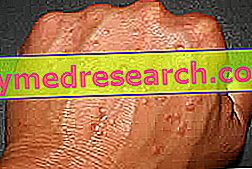
Causes of Loss of Tone
Conceptually, aging can be defined as a progressive, time-dependent deterioration of the body's ability to respond to environmental changes. Two types of skin aging have been codified: intrinsic and extrinsic.
Intrinsic aging
Intrinsic aging depends on advancing age and is influenced by genetic background ( chronoaging ). Causes hypotrophic alterations of the skin with alteration of all the components and functions of the integumentary system.
In particular, the structure of the fibrous proteins that make up the dermis (collagen and elastin) is modified.

When the cellular metabolism slows down, the skin faces a profound revolution, which occurs on the face with the appearance of relaxation, loss of elasticity and deep wrinkles. The first wrinkles are those of expression, caused by facial contractions which, becoming repeated, are imprinted on the underlying dermis which is simultaneously losing its tone. With the loss and alteration of collagen and elastic fibers, the tissues begin to relax, the skin loses its support and the oval of the face begins to deform.
Role of free and UV radicals
The environmental factors that lead to the formation of free radicals, therefore the main causes of skin aging, consist mainly of solar radiation, smog, and smoke.
There is a close relationship between skin aging and free radical oxidative damage, since polyunsaturated fatty acids, which are the main constituent of the stratum corneum, are particularly susceptible to attack by these molecules (lipid peroxidation). Furthermore, free radicals cause the depolymerization of polysaccharides, such as hyaluronic acid, which causes premature cellular aging in the skin.
The UVA rays penetrate the dermis damaging the collagen and elastic fibers: the new fibers that are formed can show alterations that give life to an opaque fabric, wrinkled and not very compact.
One of the most credible hypotheses holds that actinic radiations, inducing the formation of free radicals in the skin, are normally contrasted by its natural antioxidant defenses; however, when the dose of these radiations is high, or the natural defenses are insufficient, it is no longer possible to maintain the levels of free radical concentrations below the critical concentrations.
1 Puizina-Ivić N, Mirić L, Carija A, Karlica D, Marasović D. Modern approach to topical treatment of aging skin. Cell. Antropol. 2010 Sep.34 (3) 1145-53.



